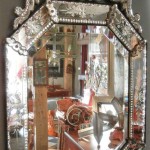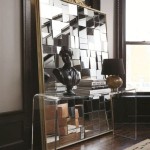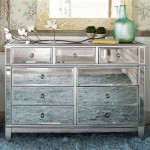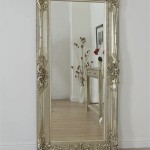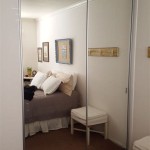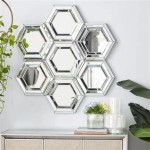How to Make a Frame for a Bathroom Mirror
Framing a bathroom mirror elevates its appearance and adds a touch of personalized style to the space. This project can be completed with readily available tools and materials, offering a cost-effective way to enhance bathroom décor. Whether aiming for a rustic, modern, or traditional look, constructing a mirror frame is an achievable DIY project for varying skill levels.
Choosing the Right Materials
Material selection depends on the desired aesthetic and the bathroom's environment. Wood offers a classic and versatile option, adaptable to various finishes. Consider moisture-resistant varieties like cedar or redwood for enhanced durability in humid conditions. Alternatively, composite materials like MDF (medium-density fiberboard) provide a smooth, paintable surface, though they require careful sealing against moisture. Metal frames offer a sleek, contemporary look, and materials like aluminum or stainless steel resist rust and corrosion. Plastic molding provides a lightweight and affordable option, suitable for simpler frame designs.
Taking Accurate Measurements
Precision in measurement is crucial for a well-fitting frame. Begin by measuring the mirror's length and width accurately. Add the desired frame width to these measurements to determine the final dimensions of the frame pieces. For example, for a 24-inch wide mirror with a 2-inch wide frame, each horizontal frame piece should be 28 inches long. Double-checking these measurements minimizes errors and ensures a seamless fit.
Cutting and Joining the Frame Pieces
The cutting process depends on the chosen material. Wood and composite materials can be cut using a miter saw for angled cuts necessary for a neat frame joinery. A 45-degree angle on each end of the frame pieces allows them to fit together seamlessly. Metal frames may require a metal cutting saw or specialized tools depending on the thickness and type of metal. Plastic molding can be cut with a standard hand saw or utility knife. After cutting, ensure the ends are smooth and square for optimal joining.
Joining the frame pieces requires appropriate adhesives and fasteners. Wood glue provides a strong bond for wooden frames, and wood screws further reinforce the joints. Metal frames can be joined using metal epoxy or welding, depending on the metal type. Plastic molding often uses specialized plastic adhesive or clips for assembly. Ensure the chosen adhesive is suitable for the material and the humid bathroom environment. Clamps can be used to hold the pieces together securely while the adhesive sets.
Finishing the Frame
Finishing the frame protects it from moisture and enhances its appearance. Wooden frames benefit from sanding to smooth out any imperfections before applying paint or stain. A sealant specifically designed for bathrooms provides additional protection against moisture damage. Metal frames may require protective coatings or polishing to maintain their luster and prevent corrosion. Plastic frames can be painted with spray paint specifically formulated for plastic surfaces.
Attaching the Frame to the Mirror
Several methods exist for attaching the frame to the mirror. Construction adhesive can be applied to the back of the frame before carefully placing it over the mirror. Ensure even pressure is applied during adhesion to create a strong bond. Alternatively, small clips or brackets can be used to secure the frame to the mirror, offering a more flexible option for future adjustments. Choosing the appropriate method depends on the frame material and weight.
Mounting the Framed Mirror
Mounting the framed mirror securely is the final step. If the existing mirror clips or mounting system are compatible with the new frame, they can be reused. Alternatively, new mounting hardware may be required. Consider the weight of the framed mirror when selecting appropriate hardware. Ensure the wall anchors are suitable for the wall material and capable of supporting the weight. Follow the manufacturer's instructions for proper installation of the mounting hardware.
Decorative Considerations
Embellishments and decorative elements can further personalize the frame. Consider adding decorative tiles, mosaics, or other materials to the frame surface for a unique touch. Molding can be applied to create intricate frame profiles. The chosen decorative elements should complement the overall bathroom design and personal style.

Mirror Frame Diy How To Update A Basic Bathroom Our Faux Farmhouse

Mirror Frame Diy How To Update A Basic Bathroom Our Faux Farmhouse

Diy Stick On Mirror Frame Sawdust Sisters

Diy Framed Bathroom Mirrors Living With Lady

Diy Bathroom Mirror Frame With Molding The Happier Homemaker

Diy Bathroom Mirror Frame Without Removing Clips Her Happy Home

Build A Wood Mirror Frame With This Easy Diy Building Bluebird

How To Frame A Mirror

Diy Bathroom Mirror Frame For Under 10 O Hayley Blog

Bathroom Mirror Frames 2 Easy To Install Sources A Diy Tutorial Retro Renovation


